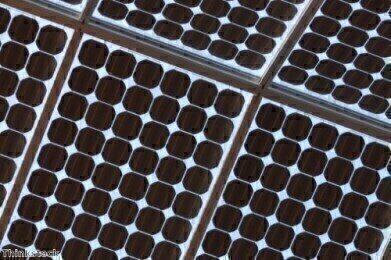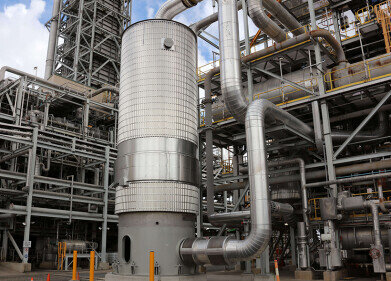-
 New solar cells would be cheaper for households
New solar cells would be cheaper for households
Air Clean Up
Quantum physics could create more effective solar cells
Apr 29 2013
Theoretical work on the creation of third-generation solar cells is set to begin at the University of Salford. The new cells aim to increase the solar panels efficiency from ten per cent to 31 per cent or more. The new technology will use semi-conductor nanostructures which will turn a higher level of sunlight into electricity.
The research is being headed by Professor Stanko Tomic from the University of Salford's School of Computing, Science and Engineering. With his team Professor Tomic will start designing the semi-conductor quantum dots. These dots are more effective at reducing the energy losses that currently occur within the currently-used silicone solar cells. This will vastly improve the efficiency of the solar cells and will make them more cost efficient - whilst also creating a higher rate of electricity for commercial and domestic uses. The conventional silicon cells tend to turn between ten and 20 per cent of sunlight into electricity, whereas the new cells should turn at least 31 per cent of sunlight into electricity - if not more.
Professor Tomic will be using methods of computational physics in order to create the new cells. This method combines the laws of quantum mechanics and advanced numerical algorithms with supercomputer power. This technique will work to describe the structure of the materials in order to design the new solar cells. The new quantum dots will then be manufactured at the University of Tokyo and the University of Manchester. Some of the materials that will be used to fabricate the dots include cadmium selenide, gallium arsenide and indium arsenide, amongst other items.
The research is being funded by the Royal Society, London and the Engineering and Physical Sciences Research Council, UK - amongst other societies. It is hoped that the new research will further the ability to de-carbonise energy supplies and make solar power available to a wider range of people. Currently solar panels are still more expensive than using energy created by fossil fuels. Once this technology is completed the hope is that it will be able to be mass-produced and will therefore be much cheaper. Smaller panels will also be able to generate more electricity than the current silicone panels. These new solar cells will be better suited to urban environments, where space is at a premium and power is supplied via long-distance power grids.
Professor Tomic said: "Governments around the world are keen to pursue this technology, but in the UK we have one of the few teams able to create working cells. While the high efficiency solar cells possibly represent the energy source of the second half of the century, the work we're doing now is of utmost importance as we seek to limit carbon emissions."
Events
May 05 2024 Seville, Spain
May 13 2024 Munich, Germany
May 23 2024 Beijing, China
May 23 2024 Beijing, China
Jun 10 2024 Algiers, Algeria













